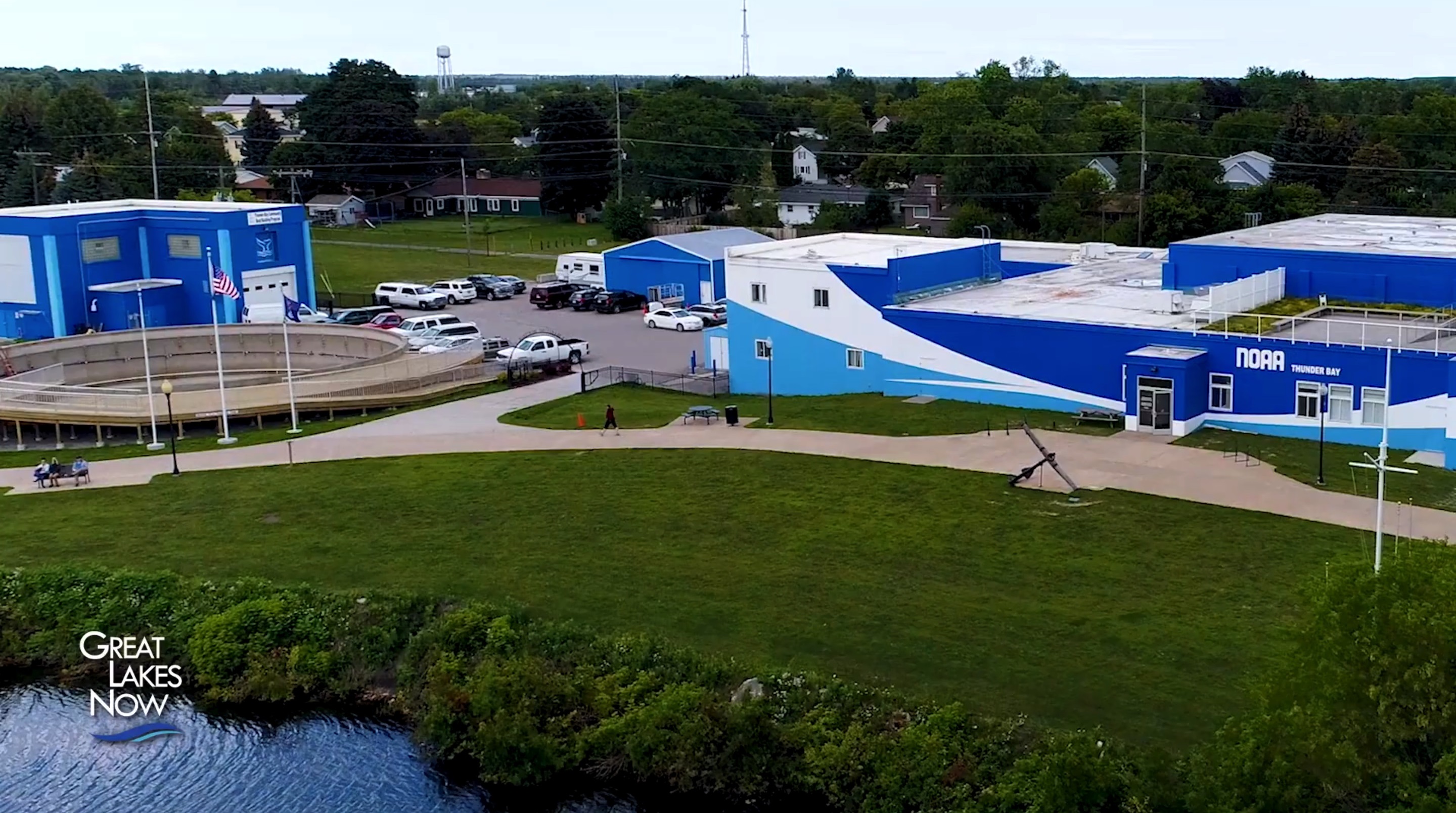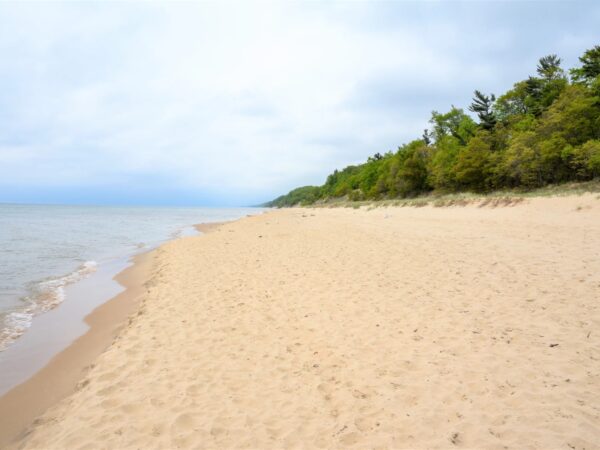
Four of the five Great Lakes could boast national marine sanctuaries if current plans continue toward such federal protection.
Currently, just Thunder Bay National Marine Sanctuary in Lake Huron has the designation from the U.S. National Oceanic and Atmospheric Administration (NOAA).
But the federal agency is considering proposals from Lake Ontario, Lake Michigan and Lake Erie for sanctuaries, which means NOAA would help protect and showcase each area’s shipwrecks, historical sites and marine life.
“The sanctuary program and national marine sanctuaries are set aside to protect special places,” said Joe Hoyt, the national maritime heritage coordinator with NOAA’s Office of National Marine Sanctuaries. “These (sanctuaries) really are the crown jewels so to speak in the marine environment, whether that’s for natural resources or cultural resources, and the program protects both those things.”
But the process for nominating and designating a national marine sanctuary is a long one with no set timeline.
View Great Lakes Now’s “Wrecks Within Reach” video:
Lake Ontario marine sanctuary had “a particularly exceptional nomination”
One of the latest nominations has been a sanctuary in the southeast corner of Lake Ontario, just off the shore of New York. The state submitted the nomination to NOAA in partnership with the city of Oswego and Oswego, Jefferson, Wayne and Cayuga counties in January 2017.
“We have several communities that have nominated areas to be considered for national marine sanctuary status, and we’re moving forward with Ontario now because it was a particularly exceptional nomination,” Hoyt said.
“The resources there are wonderful historic resources, and there’s a lot of community support,” he added. “So really the reason this location was selected was because of the significance of the resources there.”
Lake Ontario being one of the earliest Great Lakes to be settled in the colonial period, its significance during the American Revolutionary War, its history of maritime commerce and the lake containing some of the oldest known shipwrecks in the Great Lakes are just some of the reasons Hoyt for why a Lake Ontario sanctuary is deserved.
But right now, the nomination is in the public’s hands. NOAA is accepting public comment on the proposal until July 31 and will be hosting a series of meetings in New York from June 10 through 13. Information on attending a meeting or submitting a comment, as well as the proposal documents, is all available on NOAA’s website.
After the comment period, NOAA will develop an environmental impact statement and then a draft proposal, all of which will go back to public review. “That will take some time,” Hoyt said. “Right now we’re in an information-gathering stage.”
Lake Michigan potential sanctuary currently in limbo
It isn’t just the information-gathering that will take some time, however. Every step of the process of establishing a new national marine sanctuary is time consuming. It takes years to follow through, and even then there’s no guarantee that the sanctuary will be designated.
The Wisconsin – Lake Michigan National Marine Sanctuary and the Lake Erie Quadrangle National Marine Sanctuary are both examples of that.
The Wisconsin – Lake Michigan National Marine Sanctuary sits on NOAA’s list of designations in progress. The proposal made it pretty far into the designation process, with one major stalling point—former Wisconsin Gov. Scott Walker pulled support for it in March 2018. The marine sanctuary would cover around 1,000 square miles of Lake Michigan along the coast of Wisconsin, north of Milwaukee.
The project is currently in limbo as supporters hold out hope that the new administration, under Gov. Tony Evers, will approve the project.
“We’re hoping it might get a new life with the new governor’s consideration,” said Mike Vandersteen, mayor of Sheboygan, Wisconsin. He helped to spearhead the nomination on behalf of Sheboygan, alongside the cities of Two Rivers, Manitowoc and Port Washington.
“This is a cultural marina that draws attention to the marine history that all of our communities have,” Vandersteen said. “Sheboygan has a very rich maritime history. We have one of the few schooners that had been a wreck, on display next to our marina. It’s one of the few fairly intact wrecks that are on display on land. We kind of rally around it.”
Vandersteen is hoping that NOAA and the new administration will “find time to begin those discussions” about possibly moving forward with the Lake Erie sanctuary, he said.
“(The marine sanctuary)’ll give the communities here one more calling card to bring tourists into our area,” Vandersteen said.
Progress on Lake Erie marine sanctuary stalled
The Lake Erie Quadrangle National Marine Sanctuary is even further behind than Wisconsin -Lake Michigan in terms of progress. The nomination for the Lake Erie sanctuary was approved by NOAA in February 2016, which means it is currently in NOAA’s inventory of areas that could potentially be designated as a marine sanctuary.
The sanctuary is not currently being considered beyond that.
“The Office of National Marine Sanctuaries is excited about the level of community interest in a potential sanctuary in Lake Erie,” NOAA said in a statement about the Lake Erie sanctuary nomination.
“However, with many great options to choose from, NOAA must weigh several factors, including the availability of resources from both within and outside the agency, other management priorities, and public support, before deciding to begin the designation process,” the statement continued. “If NOAA determines sanctuary designation should be considered, the agency will follow the procedures identified in the National Marine Sanctuaries Act, a process that is highly public and participatory, and which typically takes years to complete.”
Shipwrecks are a springboard for talking about Great Lakes issues, resources
“(NOAA’s) purpose is very similar to our purpose with the Wisconsin Historical Society, and that’s basically trying to preserve and promote safe visitation and also different kinds of information and historical research into these rich maritime resources that are located across the country,” said Caitlin Zant, a maritime archeologist with the Wisconsin Historical Society.
The Wisconsin Historical Society was involved in putting together the nomination for the Wisconsin – Lake Michigan National Marine Sanctuary.
As a maritime archeologist, it’s Zant’s job to record details about and measurements of shipwrecks, as well as do and share research and outreach in Wisconsin and around the region.
“It’s not just that it’s protecting things on the water, but it’s also about getting into schools and teaching children and getting kids out on the water and just teaching kids using shipwrecks as a springboard to talk about other resources and Great Lakes issues that are going on,” Zant said.
Designating a marine sanctuary is just another way to encourage outreach, according to Zant.
“It’s not to keep people away from them by any stretch of the imagination,” she said. “It’s to get people to interact with them on a larger level.”
There is a balance to strike when encouraging more people to engage with the sanctuaries while also wanting to preserve the cultural and natural resources, however.
“They’re basically museums in and of themselves down at the bottom,” Zant said. “They’re non-renewable resources, so a shipwreck is basically a time capsule of the time and the place and the people that occur when the ship actually sank, and to have that all intact together is a really unique thing that can’t be replaced.”




